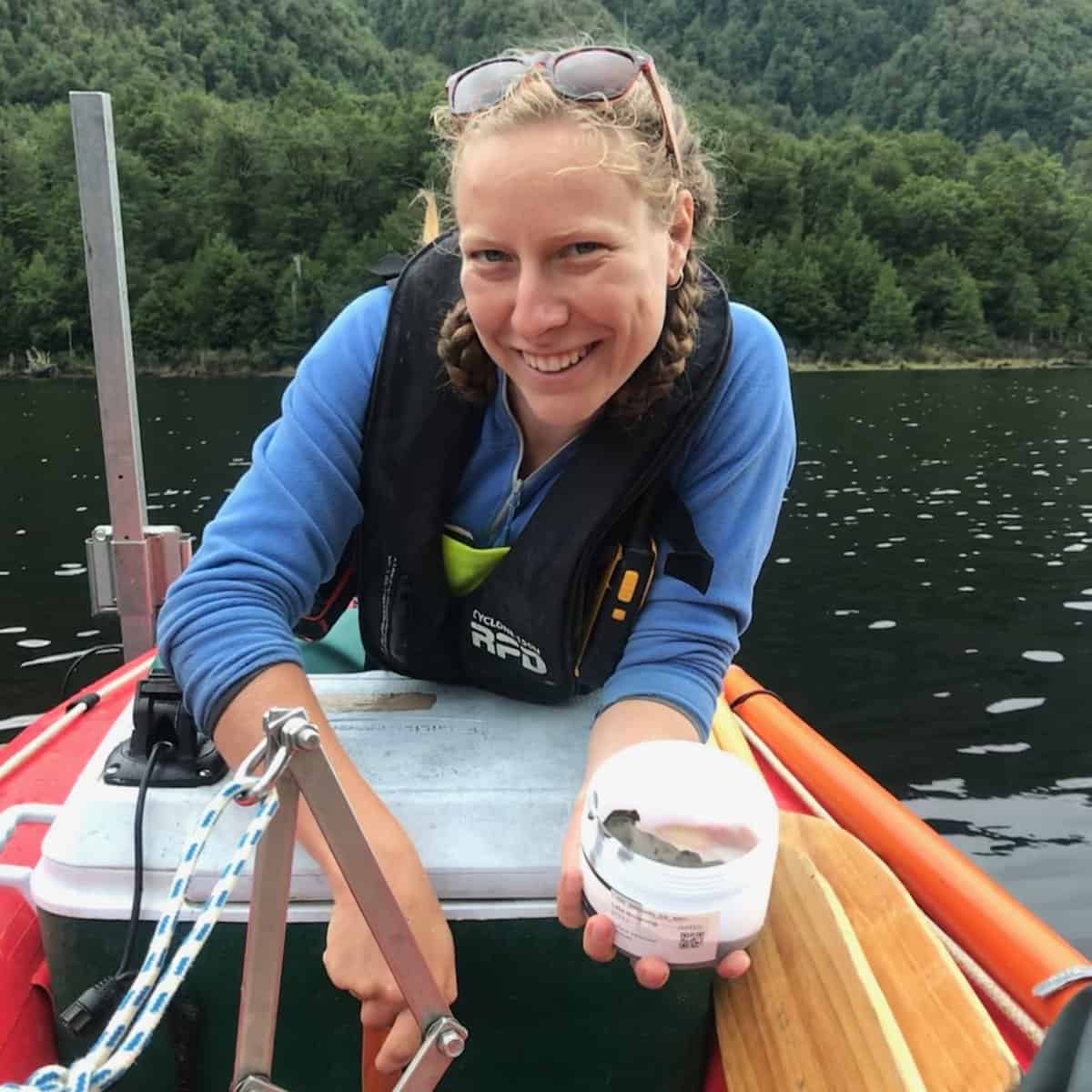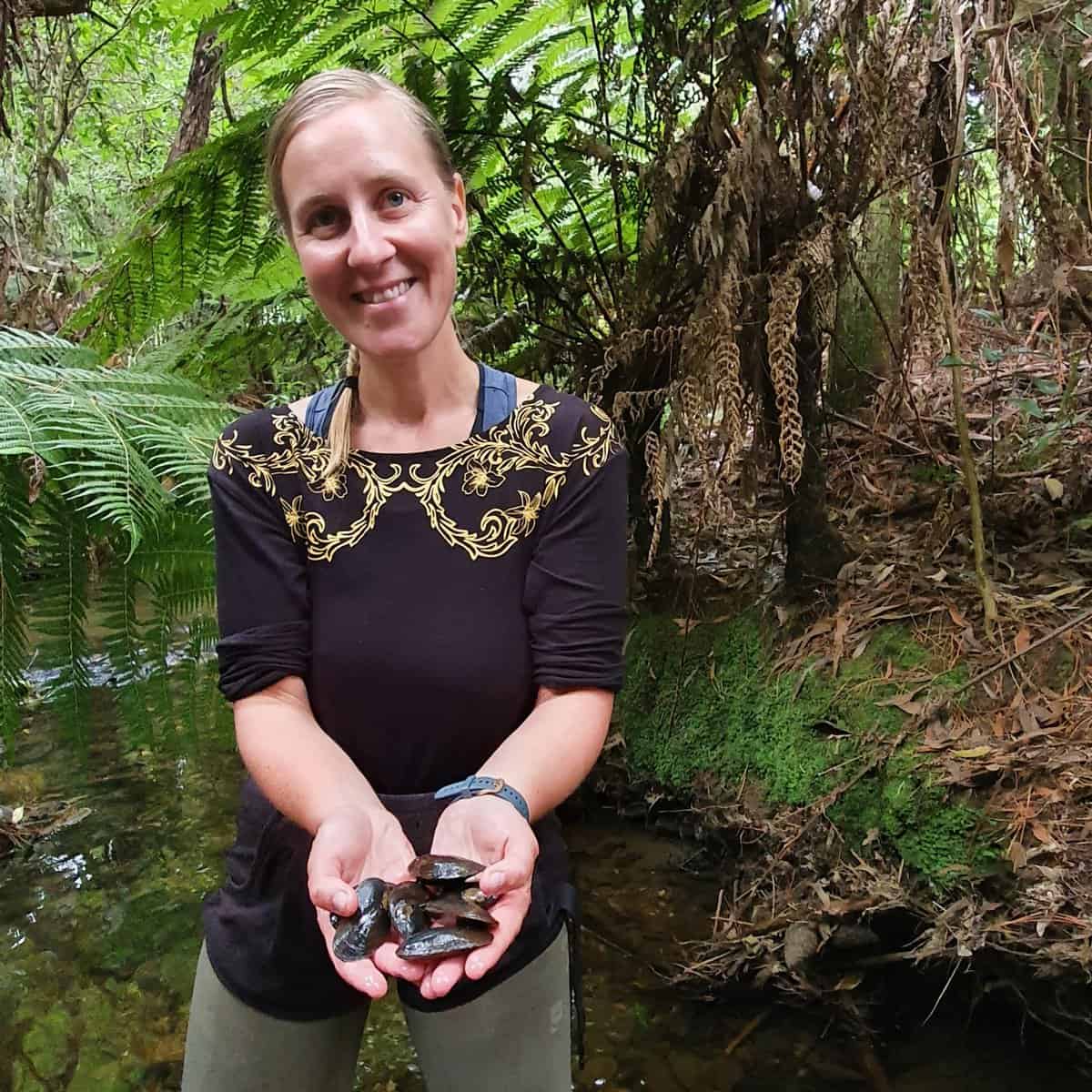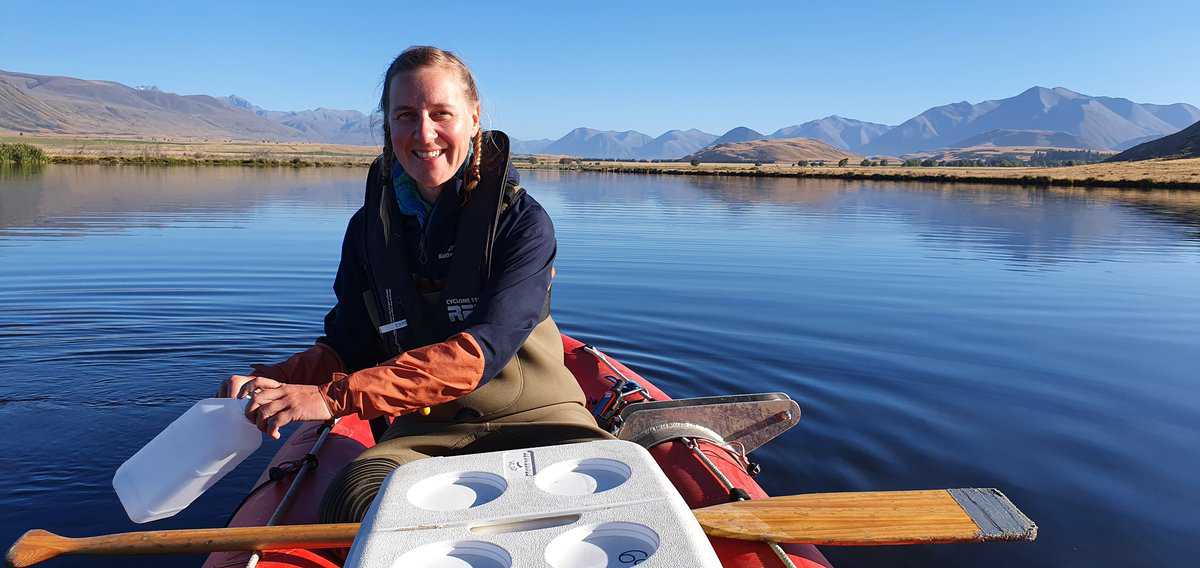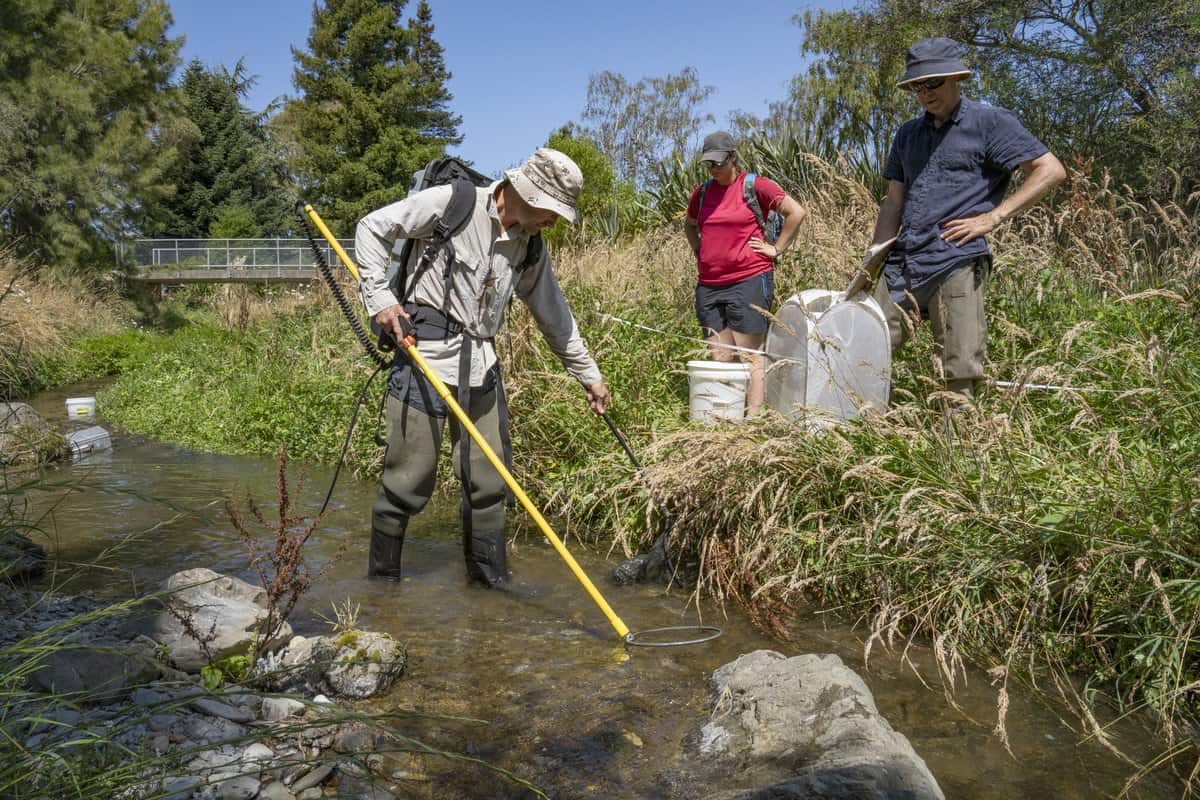Case study: Using eDNA to detect and protect taonga freshwater species in Aotearoa.
by Konstanze Steiner and Georgia Thomson-Laing
24 September 2021
The planet’s natural environment is under increasing pressure and active change is required to protect and conserve it. Scientists agree that there is a biodiversity crisis in freshwater environments worldwide, with the loss of hundreds of species to-date and many more at increasing risk of extinction. Freshwaters are vulnerable to human related activities such as overfishing, water pollution, water abstraction, intensification of land use, habitat degradation and the introduction of exotic species. Lakes and rivers in Aotearoa are facing many of these threats which are causing a decline in a number of native (those naturally occurring in Aotearoa) and endemic species (those that only exist in Aotearoa).
Preserving biodiversity in freshwaters in Aotearoa is important for many biological, social, and cultural reasons. Biodiversity is crucial for the functioning of ecosystems; all species in an environment carry out important jobs such as decomposition, nutrient recycling, primary production, or consumption through the food chain to maintain a healthy ecosystem. We rely on these processes to keep our freshwaters clean and protect freshwater food sources. As an island that has evolved with its own unique flora and fauna, Aotearoa is home to a high number of endemic species. Endemic species are often more vulnerable to the degradation of freshwater health than introduced species. The presence and abundance of key native and endemic species can provide us with valuable information about the health of our freshwaters. In addition, many of these species are taonga species, with high cultural significance to Māori. We need to protect and conserve taonga freshwater species such as tuna (eel), kōura (crayfish), and kākahi (mussel) to preserve their cultural value and ecological importance.
To help protect our freshwater species, we need to know where they live, how many there are and what is causing their populations to decline. Reliable detection of these species is critical. When we can understand where species populations are declining, we can target these rivers or lakes for protection or restoration. To gather this information, a range of animal monitoring techniques are currently used in Aotearoa, including catching or looking for animals using nets, traps, electrofishing, diving or searching by hand. While these are great tools for counting the number and type of species present, they are very labour intensive, and they require a high level of expertise and expense to undertake. Depending on the method used, they might also disturb and interfere with the animals or their environments. To overcome these challenges, we have been developing molecular tools to assist with the detection and monitoring of our taonga freshwater species.
These tools make use of the fact that traces of the genetic material (DNA) of animals and plants are present in the water and sediment where they live. These animals constantly leave traces of their DNA in the environment around them through shedding of skin, urine or when they (or parts of them) die and decompose.

Georgia Thomson-Laing – Scientist

Konstanze Steiner – Molecular scientist
Using our new techniques all we need to do is collect water or sediment samples from a lake or river and analyse the environmental DNA (eDNA) in the sample to see if a certain species is present. Each species has their own genetic makeup, this helps us to identify the DNA that is unique to one species and differentiate it from all the other eDNA present in an environment. We have developed highly sensitive methods of detecting eDNA for shortfin and longfin tuna and the three species of kākahi present in Aotearoa. We are also in the process of doing the same for kōura. Variations of this method also allow us to look at total eDNA in the sample and determine the community composition (all the different species) present in an environment. The current eDNA methods that we have developed already provide a tool with some appealing possibilities. With minimal disturbance, environmental samples can tell us about the presence or absence of species in an environment, while being cost efficient with a short turnaround time from sampling to data generation.
Even more exciting, using eDNA allows us to track historical patterns of species. As part of the Lakes380 project (www.lakes380.com), we collect sediment cores from lakes to look at historical eDNA that has been preserved in lake sediment up to 1000 years ago. Sediment is continuously layering at the bottom of lake, and it captures the state of the environment at the time it was deposited and from this creates a natural environmental archive. Using DNA methods, we are starting to explore how and why lake biodiversity may have changed over time; what species were there in the past, what species are currently present in the lake and what factors may have driven any changes that we see through time (i.e., the introduction of exotic species, land use change in the catchment).
Since using DNA detection tools is a reasonably new technique, we are still working on fine-tuning the method and making sure we get consistent and reliable results. We’re doing this at Cawthron Institute, and other research institutes around the country are also investigating the use of DNA tools for various research purposes as well as monitoring strategies. We are keen to collaborate with national and overseas researchers to develop this technology to the point that it is internationally accepted and standardised. There are several exciting possibilities for these tools to be used in both an applied conservation context as well as in research.
Incorporating DNA tools into conservation and monitoring programs can complement the current traditional monitoring methods. Because the sampling is faster and easier than traditional monitoring methods, there is potential to survey a greater number of rivers and lakes in a wider range of environments and perhaps in environments that have previously been inaccessible to carry out traditional monitoring programs.

Image: Cawthron Institute.

Image: Cawthron Institute. Cawthron researchers using an electric-fishing technique to detect species of fish in a stream.
Due to the simplicity of the sampling methods, DNA tools also have the potential to be used by a greater range of people, for example community groups and citizen science programs. Ultimately, we hope for the eventual incorporation of eDNA methods into standard procedures when carrying out monitoring and restoration programs in Aotearoa. We believe that this would provide a simple sampling strategy to help us to monitor some of our most precious freshwater species in a minimally invasive way and identify the lakes and rivers most in need of restoration efforts.